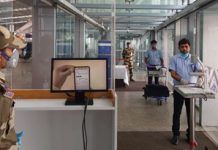Mumbai is on the verge of getting its much-delayed CCTV cover, with the first phase of the project to install a city-wide CCTV-based surveillance system being soft-launched in mid-August. The Rs949-crore project, originally floated after the 26/11 terror attacks, will see a network of 6,020 remotely-monitored, high-definition quality IP cameras being installed at 1,492 sites. It will help maintain law and order by enabling real-time video streaming and quicker response, aid investigations, improve traffic management, ensure deterrence and generate evidence for judicial scrutiny.
These cameras will be installed in phases by October 2016, beginning with South Mumbai, which will be covered by November this year. The state has inked an agreement with a Larsen and Toubro (L&T)-led consortium, consisting of MTNL and CMS Computers Limited, after almost four years and several false starts.
“The first target of the Mumbai CCTV network will be the south zone,” said Additional Chief Secretary (Home) KP Bakshi, adding that this will cover South Mumbai and interiors of the Mumbai Port Trust (MbPT). “A survey has been conducted in the entire MbPT area, all pole locations have been decided and 75% poles have been erected, while in the remaining south zone areas, nearly 60% poles have been put up,” said Bakshi.
“We have an internal soft target to commission the CCTV network in 150 places by August 15,” said an official involved in the exercise, adding that wireless connectivity would be used to bridge last mile connectivity issues during rains, where digging is not allowed. Later, this will be shifted to a wired network. “After this soft launch, we will gauge if the feed has any issues and resolve problems without waiting for November.”
The BMC has given limited permissions for laying lines and erecting poles in certain areas where traffic will not be affected in the monsoon… BMC commissioner Ajoy Mehta and MbPT officials have been helpful in pushing the CCTV project,” noted Bakshi. He also said that multiple agencies — the police, the BMC and power distribution companies — were involved in the project. A monitoring centre will also be established in the Mantralaya. The official said the survey had been completed for most of the remaining regions, and added that around 100 institutions, including malls and hospitals, had been identified and would be provided network connectivity for “event-based access” to their CCTV systems during times of need. The south Mumbai region will be covered by November 2015, followed by the north and east (April 2016), and central and west (September 2016). The project consists of operations and maintenance for five years post go-live.







